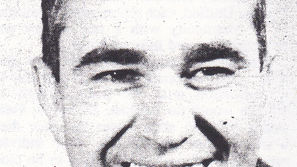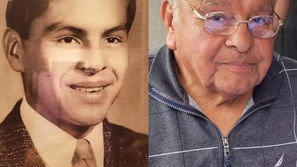Berenda meant antelope — literally
- Bill Coate
- Dec 29, 2018
- 3 min read

Madera County Historical Society Berenda’s Vignolo Hotel, shown here in 1885, was a major stage stop for travelers. In the next year, the Southern Pacific built a rail line from Berenda to Raymond for tourists who wished to visit the Yosemite Valley.
Once upon a time herds of antelope roamed over much of the San Joaquin Valley.
So numerous were they in the 19th century that one community, not far from Madera, took them for their mascot and named their little town after the fleet-footed animals.
Although the town of Berenda is long gone, its name remains in the form of a school and in the memory of a few old timers.
Berenda was born when the Central Pacific Railroad crossed the Fresno River in 1872. Prior to that year, there were no towns on the Valley floor of what is now Madera County. When it reached what would become Berenda on March 5, 1872, the railroad installed a 20,000-gallon wooden water tank for its steam locomotives, and a town was born.
A thriving village soon followed on the heels of this development, as people came from miles around, driving their horses and buggies to Berenda’s lively “warehouse dances.” They spent the night in one of the three hotels built prior to 1900, and were pampered by the town’s laundress who washed clothes at the rear of the Vignolo Hotel and answered to the nickname of “Snowball.”
The enterprising Leroy Dennis played a leading role in the growth of Berenda. Sensing that the railroad would trigger the development of modern farm life, he prepared to provide the essential supplies and services that would be needed.
Dennis, a former sheriff of what was then Fresno County, built the first store and hotel in the area — they would serve as the basis for Berenda’s early beginnings. As these needs were met, additional hotels, general stores, a blacksmith shop, a laundry, saloons, and finally a school were added.
When the nearby mountains came alive with mining and lumber activity, Berenda soon felt the impact. Mail and passenger service had to be provided to the foothills and mountains, giving rise to horse-drawn stage operations between Berenda, Buchanan, and up into the higher country of Grub Gulch and Fresno Flats. Within a short time, people were coming to Berenda to travel to the mines and lumber mills to work. All the while, the mercantile establishments on the valley floor continued to thrive.
In the 1880s the Yosemite Stage and Turnpike Company persuaded the railroad to attempt to build a branch line from Berenda to Raymond. This line was completed on May 14, 1886, and Berenda received another thrust of growth. The railroad bed of these tracks can still be seen near the Daulton Ranch and at many other sites in the higher elevations.
The town had a brief moment of notoriety in 1903, when President Theodore Roosevelt took the train from Berenda to Raymond on his way to Yosemite, but it then began to die as travelers took alternative routes.
Berenda was hard-hit in 1907, when all of the Yosemite traffic was lost to the Yosemite Valley Railroad that was constructed from Merced to El Portal and the farming interest began conducting business in Madera.
To make matters worse, the copper miners stopped bringing their ore to the Berenda depot for shipment.
On Aug. 31, 1935, the Berenda post office was closed, and for all practical purposes, the town died. The track from Daulton to Raymond was abandoned in 1942, and the 10-mile track between Berenda and Daulton was abandoned in 1956. All of the buildings on the west side of the railroad tracks, except the schoolhouse, were moved to the east side to make way for the construction of the Golden State Highway (99) in 1914.
The Southern Pacific’s tank was dismantled in 1958, due to the discontinued use of steam locomotives, and Berenda School was moved further to the west when Highway 99 became four lanes in the 1940s. The Berenda passenger and freight depot had been dismantled in Aug. 1940.
The schoolhouse is Berenda’s only surviving building. The rabbit drives, along with the geese, coyote, and antelope hunts which were popular diversions in Berenda, faded away with the town, but the pieces of Berenda’s past live on in the memories of the old and imaginations of the young.


























Comments